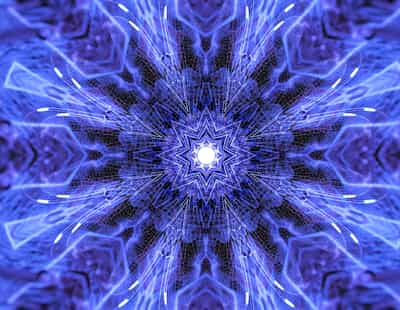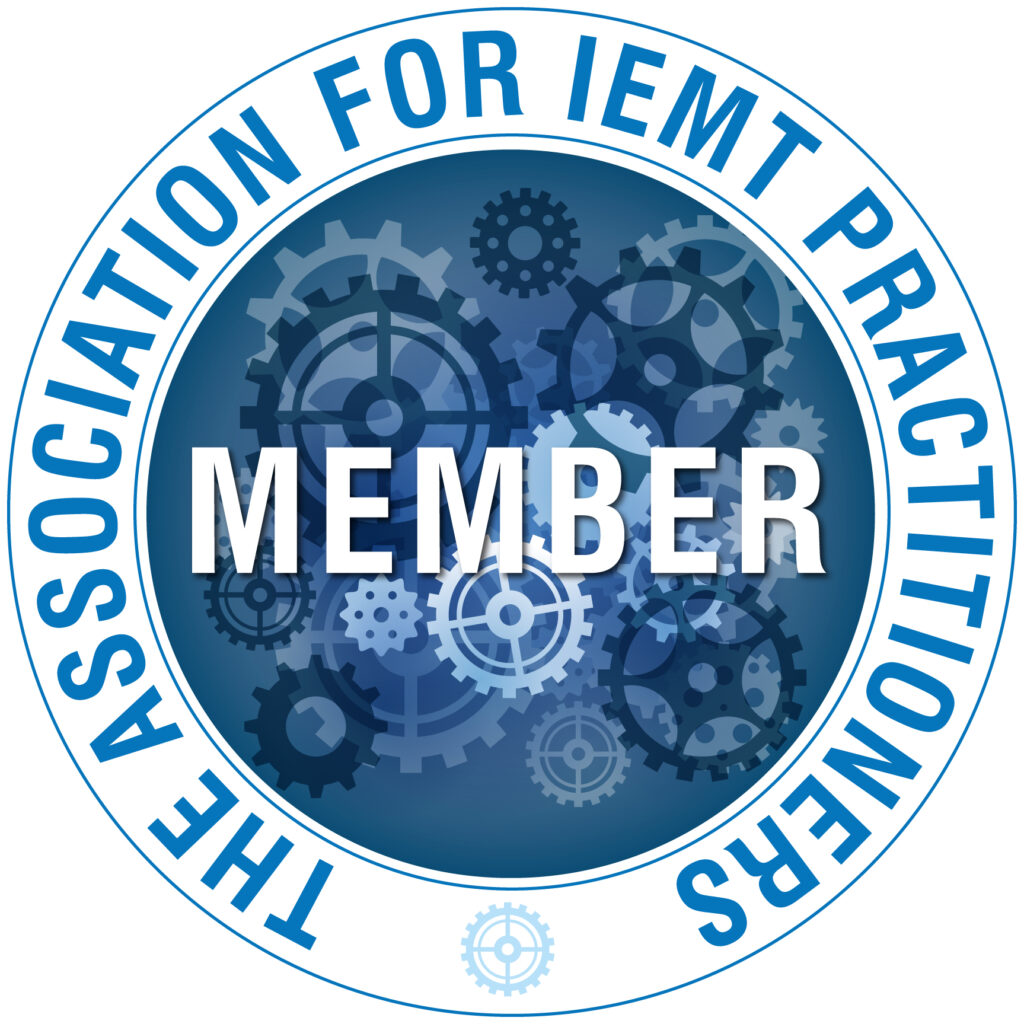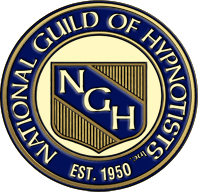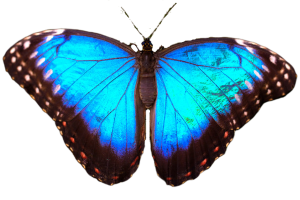
Ever found yourself daydreaming about exploring the depths of your mind, but the thought of dabbling in psychedelic substances feels like a road trip without a map? Well, you’re in for a treat! This guide is your ticket to a psychedelic journey, no substances required.
We’re talking about natural methods like meditation, breathwork, sensory deprivation, and more. These practices can lead to profound experiences of unity, oneness, and altered perception, much like a psychedelic trip. But wait, there’s more!
These methods also come with a host of other benefits, like stress reduction, anxiety relief, a deeper sense of purpose and improved mental health. So, ready to embark on this mind-bending journey? Let’s get started, no magic mushrooms needed!
Understanding Psychedelic Experiences
The key to growth is the introduction of higher dimensions of consciousness into our awareness.
Lao Tzu
Let’s take a moment to really get what a psychedelic experience is all about. It’s not just about seeing vibrant colors or geometric patterns. It’s a profound, often life-changing journey into the depths of one’s consciousness.
It’s like taking a deep dive into the ocean of your mind, exploring uncharted territories that were always there, just beneath the surface, waiting to be accessed.
Psychedelic experiences are often described as mystical experiences, a term that might bring to mind ancient monks in far-off lands or shamans in the jungles of Peru. But really, a mystical experience is one that is always available if we open up to it.
It is something that gives us a sense of unity, a feeling of being connected to everything around us, and a greater expansiveness to the world around us and within us.
It’s a state where the boundaries between self and other start to blur, and you can feel a deep sense of oneness with the universe. You are able to tap into and notice all the synchronicities, patterns, and magic that is happening all around you at all times. Sounds pretty amazing, right?
Now, let’s get a bit scientific. These experiences are often associated with changes in brain activity, particularly in the default mode network. This network, active when our minds are at rest, is associated with self-referential thinking and mind-wandering.
During a psychedelic experience, this network becomes less active, leading to a dissolution of the ego, or the sense of self.
But here’s the kicker: these experiences aren’t just about feeling good or having a spiritual awakening. They can also have lasting therapeutic benefits. Recent studies have shown that a single dose of a psychedelic compound can have long-term effects on mental health.
In fact, psychedelic-assisted therapy is being studied as a treatment for conditions like post-traumatic stress disorder, and alcohol addiction to name a few.
However, as we’ll explore later, these experiences don’t have to come from a psychedelic compound found in magic mushrooms or other psychoactive substances. There are ways to dive into these states of consciousness without ingesting a thing.
You can actually access the inner workings of the mind and connect on a deep level with this state of being through other methods that already exist within your body.
In fact, by the more aware you become of the capabilities that your body and your mind have to access these states naturally and heal the more profound transformation and healing you will be delivered.
The Risks of Drug-Induced Psychedelic Experiences

Now, before we go any further, let’s chat about the elephant in the room: the risks associated with drug-induced psychedelic experiences. It’s easy to get caught up in the allure of these mind-expanding journeys, but it’s crucial to remember that these substances aren’t without their risks.
First off, let’s talk legality. Substances like LSD and psilocybin mushrooms are currently classified as Schedule I drugs under the Controlled Substances Act in most states.
This means they’re not only illegal but also considered to have a high potential for abuse and no currently accepted medical use yet. So, right off the bat, using these substances can land you in a heap of legal trouble.
But it’s not just about the law. These substances can have serious effects on your mental and physical health if not taken responsibly and with guidance.
While some people have positive experiences, others can have reactions that might be a little scary to some. We’re talking anxiety, paranoia, and even psychosis. And these effects aren’t always short-lived. Some people experience flashbacks or other psychological effects long after the drug has worn off.
So, while the potential therapeutic benefits of psychedelics are exciting, it’s clear that the risks associated with illegal and uncontrolled use are something to be cautioned about. However, there’s a silver lining here. You can have a psychedelic experience without drugs, and that’s what we’re going to explore next.
Natural Methods to Induce Psychedelic Experiences
Just as a candle cannot burn without fire, men cannot live without a spiritual life.
Buddha
Alright, so let’s get to the good stuff. We’ve talked about what a psychedelic experience is and the risks of drug-induced trips. Now, let’s explore the natural ways to tap into these profound states of consciousness. Yes, you heard that right. You can have a psychedelic experience without popping a tab of LSD or munching on magic mushrooms. Intrigued? Keep reading…
There are several natural methods that can induce states of consciousness similar to a psychedelic trip. These methods don’t involve any illegal substances, and they come without the risks associated with drug use. Instead, they involve practices that have been used for centuries to explore the mind and consciousness and expand into your inner landscape and connect with deeper ways of being and living.
We’re talking about practices like meditation and mindfulness, breathwork, sensory deprivation, hypnosis, yoga, sound therapy, and even diet. These methods can lead to experiences of unity, oneness, and altered perception, much like a psychedelic trip.
And the best part? These practices come with a host of other benefits, too. They can reduce stress, improve mental health, and lead to greater self-understanding. Plus, they’re legal, safe, and can be practiced right in the comfort of your own home.
So, are you ready to explore these methods? I thought so. Let’s dive in and discover how you can journey into your own mind, no substances required.
Meditation and Mindfulness

First up on our list of natural methods to induce a psychedelic experience is meditation and mindfulness. Now, I know what you’re thinking. “Meditation? Really, Samantha? I’ve tried that, and all I got was a to-do list running through my head.” Stick with me here, folks. This isn’t your average sit- and-breathe type of meditation.
When we talk about meditation in the context of inducing a psychedelic-like state, we’re talking about deep, focused meditation. This isn’t about clearing your mind; it’s about diving deep into your consciousness.
It’s about exploring the present moment in such a profound way that the boundaries between self and other start to blur.
Imagine sitting in a quiet room, focusing on your breath. As you breathe in and out, you start to become aware of the sensation of the air moving in and out of your lungs. You feel the rise and fall of your chest. You hear the sound of your breath.
And then, something shifts. You’re not just observing your breath; you are the breath. You’re not separate from the experience; you’re part of it.
That, my friends, is a taste of a psychedelic experience. The instant realizations and profound experiences that you are delivered by tapping into an unsourced part of your mind. The opening up to a new way of thinking, of being, of experiencing with your mind, your body, the universe, and the present moment.
And the beauty of meditation is that it’s not just about the experience itself. It’s about the ripple effects it has on your life. Regular meditation can reduce stress, improve focus, and lead to greater self-understanding.
It’s like a workout for your mind, and the cumulation of these workouts can bring about these psychedelic experiences that are the icing on top.
So, how do you get started? It’s simple. Find a quiet place, sit comfortably, and start to focus on your breath. Don’t try to control it; just observe it. Let your thoughts come and go without judgment. It’s not about emptying your mind; it’s about being present with what is.
And who knows… you might just find yourself slipping into a state of unity and oneness.
Breathwork

Next up on our exploration of natural methods to induce a psychedelic experience is breathwork. Now, you might be thinking, “Breathwork? Isn’t that just a fancy word for breathing?” Well, yes and no. While breathwork does involve breathing, it’s a bit more involved than your average inhale-exhale routine.
Breathwork is a practice that involves consciously controlling your breath to alter your state of mind. One popular form of breathwork that’s been known to induce psychedelic-like experiences is holotropic breathwork.
This technique, developed by psychedelic researchers in the 1970s, involves rapid, deep breathing, often done in group sessions with music and a guide.
Here’s how it works: By changing your pattern of breathing, you can alter your state of consciousness. It’s like a natural high, induced by nothing more than the air you breathe. And the experiences people report are pretty wild.
We’re talking visual and auditory hallucinations, emotional releases, and profound insights.
Sounds a bit like a psychedelic trip, doesn’t it?
But here’s the best part: breathwork isn’t just about the psychedelic experience. It’s also a powerful tool for self-exploration and healing. By tapping into your breath, you can release stored emotions, reduce stress, and gain a deeper understanding of yourself.
So, how do you get started with breathwork? While there are many different techniques, a simple one to start with is box breathing. This involves inhaling for a count of four, holding your breath for a count of four, exhaling for a count of four, and then holding your breath again for a count of four.
Repeat this cycle for a few minutes, and see how you feel.
Remember, breathwork can be intense, so it’s always a good idea to start slow and consider working with a trained professional.
Sensory Deprivation
Alright, folks, it’s time to talk about sensory deprivation. Now, I know that might sound a bit scary.
“Sensory deprivation? You mean like being locked in a dark room with no sound?” Well, kind of, but it’s not as terrifying as it might sound. In fact, sensory deprivation can be a deeply relaxing and
transformative experience.
Sensory deprivation often involves the use of a sensory deprivation tank, also known as a floatation tank or anechoic chamber. These tanks are filled with saltwater that’s heated to body temperature, creating a sensation of floating.
The tank is dark and quiet, removing nearly all external stimuli. It’s just you, floating in the darkness.
So, how does this lead to a psychedelic experience? Well, when you remove external stimuli, your brain has a chance to turn inward. Without the constant input from the outside world, you can dive deep into your own mind.
People often report experiences of unity, oneness, and altered perception, much like a psychedelic trip.
But sensory deprivation isn’t just about the psychedelic-like experience. It’s also a powerful tool for relaxation and stress relief. People often report feeling deeply relaxed and rejuvenated after a session in a sensory deprivation tank.
If you’re interested in trying sensory deprivation, look for a float center in your area. One I love in Delray is called Float8. They’ll provide everything you need, including the tank, the saltwater, and a quiet, private space for you to explore.
Hypnotherapy

Everything in the universe is within you. Ask all from yourself.
Rumi
Next on our list of natural methods to induce a psychedelic experience is hypnosis. Hypnosis is a technique that involves inducing a state of focused attention and heightened suggestibility. In this state, you can explore your subconscious mind, uncovering thoughts, feelings, and memories that are usually out of reach.
And many times, this will lead to the same insights, information, healing and answers that are provided during a psychedelic trip without the need for any type of drug.
Hypnotherapy uses hypnosis, a state of heightened focus and suggestibility, that has been around therapeutically for centuries. It allows individuals to explore their subconscious mind, often leading to profound insights and emotional release.
Some practitioners and researchers suggest that, under the right conditions, hypnosis can induce experiences similar to those brought on by psychedelic substances. It also provides clarity, connection, serenity, and expansion within the body and the mind.
At the heart of the hypnotic experience is the power of the subconscious mind and imagination. When we enter a state of hypnosis, which is also defined as an altered state of consciousness, we tap into our subconscious, the part of our mind that operates below the level of conscious awareness.
This is where our deepest memories, emotions, and ingrained patterns of behavior reside. It is also where our dreams manifest, where creativity is sparked, and where connection to the spirit resides.
During hypnosis, the imagination becomes a powerful tool. It draws upon our experiences, memories,
and emotions to create vivid, immersive scenarios that almost feel as if they are happening in real time. This is why a hypnotic session can often bring about that psychedelic state as your mind is traversing the landscapes of your inner world.
The imagination is also used as the springboard for allowing new visions and creative solutions to come about by using a different part of the brain and body. This ultimately brings about new states of being which result in profound life shifts.
During a hypnosis session, you might experience memories that you had not previously thought about, envision images and symbolism that need to be brought to your attention for healing, and experience a sense of a mysticism that brings about a sense of unity and oneness with a greater source.
Sounds a bit like a psychedelic trip, doesn’t it?
But hypnosis isn’t just about the psychedelic-like experience. It’s also a powerful tool for personal growth and healing. This journey into the subconscious can be profoundly healing.
By bringing awareness that which lies in the subconscious mind and using it as a resourceful tool we begin to process and integrate things on a deeper level than ever before.
This is similar to the concept of “psychedelic integration,” a process of making sense of and applying the insights gained during a psychedelic experience.
And all of this is done without the use of any drugs. This supports growth in the sense where you can actualize that you don’t need anything outside of you to give you what exists and is already accessible within.
In a safe and controlled hypnotic session, individuals can confront and reframe negative or traumatic experiences. They can also tap into positive memories and emotions, using them to foster a sense of wellbeing and resilience.
This process can lead to significant shifts in perception and behavior, much like the reported outcomes of therapeutic psychedelic experiences.
Moreover, the sense of unity and interconnectedness that people have during hypnosis can foster a sense of belonging and understanding. This can be particularly healing for individuals struggling with feelings of isolation or disconnection and those looking to make sense of their current life situations.
It is also helpful for people that are carrying with them the heavy burdens of life by allowing them to step outside themselves and release this energy to something bigger to be transformed and actualized into something for the greater good of all.
If you’re interested in trying hypnotherapy, it’s a good idea to work with a trained professional like me.
While there are plenty of self-hypnosis resources out there that are helpful, working with a professional will provide a safe and supportive environment for your exploration and allow you to work on deeper and more transformative levels.
Yoga and Movement Therapy
Let’s move on to another method that can induce a psychedelic-like state: yoga and movement therapy. Yoga is a powerful tool for exploring consciousness and inducing altered states.
Yoga is more than just a physical practice. It’s a mind-body discipline that combines physical postures, breathing exercises, and meditation. When practiced with intention, yoga can lead to states of
consciousness that will lead you deeper into yourself and bring about positive change. By creating a new relationship with your body and your mind you can mimic the results that you would want to have from a psychedelic trip without committing yourself to that process.
During a yoga session, you might experience a sense of unity and oneness, a feeling of being connected to everything around you. You might also have profound insights and altered perceptions. This brings about an experience that is different from your waking life and goes into the realm of a new reality.
Yoga is also a powerful tool for health and well-being. Regular yoga practice can reduce stress, improve flexibility and strength, and promote mental clarity.
If you’re interested in trying yoga, there are plenty of resources available. You might consider joining a local class, finding an online tutorial, or even booking a retreat. Just remember, yoga is a personal practice, so it’s important to listen to your body and move at your own pace.
Sound Therapy
Next up on our journey through natural methods to induce a psychedelic experience is sound therapy. Sound therapy also known as sound healing or sound bath involves using sound frequencies to influence brainwaves, leading to changes in mental and physical states.
Sound therapy is a practice that uses vibrations (often produced by instruments such as gongs, Tibetan singing bowls, tuning forks, or even the human voice) to relax the mind and body. It’s an ancient modality that has been used for centuries by various cultures around the world.
While sound therapy may not induce psychedelic experiences in the way that substances like psilocybin or LSD might, it can help foster a deeply meditative state. It’s thought to facilitate shifts in our brainwave state by using entrainment, which syncs our fluctuating brainwaves with the stable frequency of the sound.
This can help lead the brain from the normal beta state (normal waking consciousness) to alpha (relaxed consciousness), and even reach theta (meditative state) and delta (sleep; where internal healing can occur). As you begin influencing your brainwaves, sound therapy can induce states of deep relaxation and altered consciousness.
In this state, you might experience vivid imagery, a sense of disconnection from your physical body, and even feelings of unity and oneness. This process of synchronization can result in profound mental and physical health benefits, inducing feelings of peace, well-being, and an expanded sense of consciousness.
Some people may report having transcendent experiences, accessing altered states of consciousness that are typically associated with deep meditation, or similar to those achieved with certain psychedelic substances. It’s also a powerful tool for relaxation and stress relief.
The soothing sounds can help calm the mind, making it a great practice for winding down after a long day. If you’re interested in trying sound therapy, there are plenty of resources available.
You might consider attending a sound bath, using a binaural beats app, or even booking a session with a sound therapist.
Diet and Nutrition

Last but certainly not least on our list of natural methods to induce a psychedelic experience is diet and nutrition.
Diet and nutrition certainly play a role in our cognitive functioning, mood, and overall mental state. While food might not directly induce psychedelic experiences, it can contribute to creating optimal conditions for altered states of consciousness and mental wellbeing.
Here are some ways that certain foods and herbs might influence mood and cognitive function:
- Mushrooms: Some types of mushrooms, like Lion’s Mane and Reishi, have been used in traditional medicine for their supposed cognitive and mood-enhancing properties. Lion’s Mane is believed to support nerve growth factor synthesis, which may enhance brain plasticity, memory, and mood. Reishi is often used for its calming effects and potential to aid sleep.
- Omega-3 fatty acids: These nutrients, found in foods like fatty fish, walnuts, and flaxseeds, have been linked with brain health and mood enhancement. They’re essential for brain function and development, and a deficiency can lead to mood swings and depression.
- Green Tea: Green tea contains L-theanine, an amino acid that can induce a state of calm alertness. It also contains a small amount of caffeine, which can enhance cognition and mood.
- Dark Chocolate: Dark chocolate is high in flavonoids, caffeine, and theobromine, which are believed to work together to improve mood and cognition.
- Turmeric: Turmeric contains curcumin, which has been studied for its potential antidepressant effects. It’s thought to enhance neurogenesis and have neuroprotective properties.
- Fermented Foods: Foods like yogurt, kimchi, and sauerkraut are rich in probiotics, which are beneficial for gut health. Emerging research suggests a strong link between the gut microbiome and brain health, including mood regulation.
- Adaptogenic herbs: Certain herbs, like ashwagandha and rhodiola, are known as adaptogens, which are believed to help the body resist different types of stress, both physical and mental. These may have beneficial effects on mood and cognition.
- Cacao: Raw cacao can be a mood enhancer. It contains phenethylamine (PEA), which is a natural compound that our body synthesizes when we’re excited. It’s believed to cause the brain to release endorphins and can increase feelings of wellbeing.
These are part of a holistic approach to mental and physical health that should also include regular exercise, sufficient sleep, stress management, and a balanced diet.
It is important to consult with a healthcare provider before starting any new dietary or supplement regimen, especially for individuals with underlying health conditions or those who are taking medication.
Conclusion
While the psychedelic revolution has brought a wealth of knowledge about the mind and consciousness, it’s clear that these experiences can be accessed without the use of psychedelic drugs.
Through practices like meditation, breathwork, sensory deprivation, hypnosis, yoga, sound therapy, and mindful nutrition, you can explore your mind and body in a safe and expansive way.
The mind and body are not separate entities, but one interconnected system. Through nurturing both, we not only enhance our physical health, but open doors to profound personal growth and spiritual expansion.
Deepak Chopra






